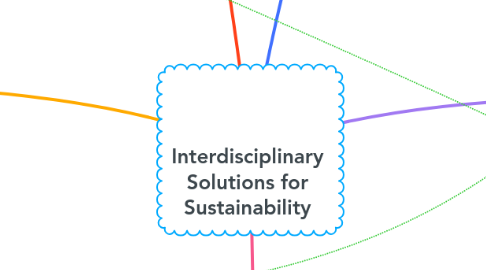
1. Ecological & Geological Perspectives
1.1. Enviromental Sciences at Mcmaster
1.2. Long-Term Earth History
1.2.1. Natural Baselines
1.2.1.1. Ice Age
1.2.1.2. Mass Exinction
1.3. Local Ecosystems & Biodiversity
1.3.1. Carbon Sinks
1.3.1.1. Peatlands
1.3.1.2. Forest
1.3.1.3. Water Bodies
1.3.2. Wild Fires
1.3.2.1. Controlled burns
1.3.3. Holistic land stewardship
1.3.4. Biomimicry
1.4. Natural Hazard Mitigation
1.4.1. Geological Data
1.4.1.1. Seismic Activity
1.4.1.2. Volcanic Activity
2. Economic Perspectives
2.1. Degroot Buisness at McMaster
2.2. Corporate Social Responsibility (CSR)
2.2.1. Transparency
2.2.2. Reduce Emissions
2.3. Green Finance & Investment
2.3.1. Funding sustainable ventures
2.3.2. Divestment from fossil fuels
2.3.3. Carbon credits
2.3.4. ESG (Environmental, Social, Governance) frameworks
2.4. Adaptation & Risk Management
2.4.1. Floodproofing
2.4.2. Supply-chain adjustments
3. Social & Cultural Factors
3.1. Social Science at mcmaster
3.2. Climate Storytelling Narratives
3.2.1. Personal stories
3.2.2. Journalism
3.2.3. Art
3.3. Mental Health
3.3.1. Eco Anxeity
3.3.2. Eco Depression
3.3.3. Eco anger
3.3.4. Seasonal Depression
3.4. Indigenous Knowledge
3.5. Enviromental education
3.5.1. Enviromental affects
3.5.2. Public Awareness
4. Policy & Governance
4.1. JPPL at McMaster
4.2. National & International Frameworks
4.2.1. Paris Agreement
4.2.2. IPCC guidance
4.2.3. Local sustainability bylaws
4.3. Urban Planning & Regulation
4.3.1. low-carbon living
4.4. Public-Private Partnerships
4.4.1. Fund sustainable projects.
5. Engineering & Technological Innovations
5.1. Engineering at Mcmaster
5.2. Principles of Sustainable Engineering
5.2.1. Life-Cycle Analysis,
5.2.2. Low-Impact Materials
5.2.3. Ethical design
5.2.3.1. Minimize Ecological Footprints.
5.3. Circular Economy Models
5.3.1. Designing out waste
5.3.2. Closing resource loops
5.3.3. product-as-a-service
5.4. Renewable Energy & Green Infrastructure
5.4.1. Solar Power
5.4.2. Wind Turbines
5.4.3. Geothermal Inovations
5.4.4. nature-based infrastructure
5.4.4.1. Green roofs
5.4.4.2. Wetland Restoration
5.5. Biomimicry
5.5.1. Nature-Inspired Design
5.5.1.1. Kingfisher-beak bullet trains to reduce drag
5.5.1.2. Whale-fin-inspired wind turbines
5.5.2. Enhanced Efficiency
5.5.3. Carbon Sequestration Innovations
5.5.3.1. lung membranes
5.5.3.2. coral formation
